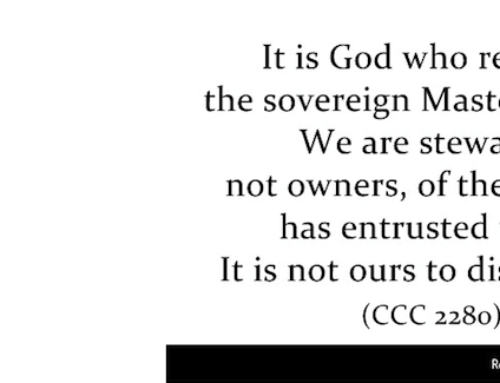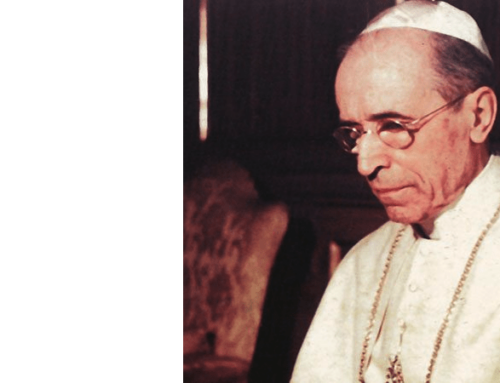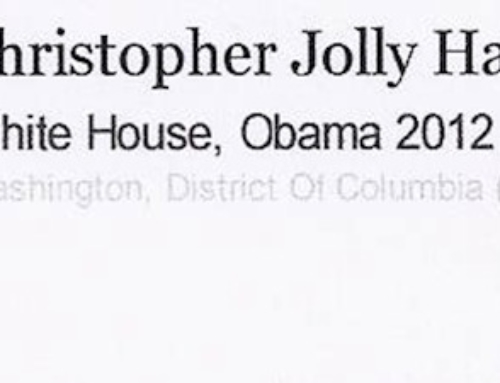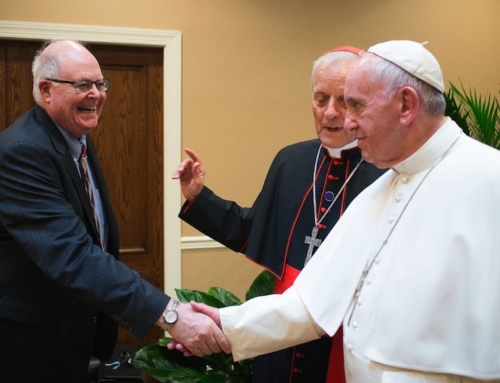by Robert P. Lockwood
(Catalyst 9/2001)
She was one of the most famous imposters in the history of the United States, yet her story can still be found in the bookstores and is widely available on the Internet. Maria Monk was the 19th century woman who claimed to be a nun that finally escaped after years of torture and sexual degradation at a convent in Canada.
Her book describing her horrendous tale, commonly referred to as The Awful Disclosures of Maria Monk, took America by storm in an era when Nativist anti-Catholicism was about to explode in riots and the growth of the Know-Nothing anti-Catholic political party. While The Awful Disclosures did not cause 19th Century anti-Catholicism in America, it was a popular propaganda tool to spread hatred of the Church. (The formal title of the 1836 release was The Awful Disclosures of Maria Monk as Exhibited in a Narrative of Her Life and Sufferings during a Residence of Five Years as a Novice and Two Years as a Black Nun in the Hotel Dieu Nunnery in Montreal).
Since its first release in January 1836, The Awful Disclosures became a staple of anti-Catholic literature and appears never to have been out of print in 165 years. Originally released by a dummy corporation set up by Harper Brothers Publishing of New York to keep it an arm’s-length away from what was considered salacious material, it sold an estimated 300,000 copies before the Civil War. It was second in sales at that time only to Harriet Beecher Stowe’s Uncle Tom’s Cabin.
Since the 19th Century it has been reprinted by an endless number of publishers and has sold untold millions of copies. A 1997 paperback edition, for example, was released in England by Senate, an imprint of Random House in the United Kingdom. The earliest edition was published in the 19th Century by T.B. Peterson of Philadelphia.
Tales of sexual perversion in the Catholic Church were common enough prior to the appearance of The Awful Disclosures. But Maria’s extraordinary fabrication would soon outshine all the competition. The Awful Disclosures begins with Maria’s birth, background and early introduction to Catholicism. Though Protestant, she attended schools taught by nuns who instructed her on the “evil tendency” of the Protestant Bible. Converting as a child, she claimed to be introduced to offensive sexual questioning by priests in the confessional. Despite this, she decided to become a nun. Yet even as a novice, she wrote, the priests “heard me confess my sins, and put questions to me, which were often of the most improper and revolting nature, naming crimes both unthought of and inhuman.”
After four years as a novice, Maria reported that she decided to flee and entered into a hasty marriage. But changing her mind, she returned to the convent to prepare for taking her final vows. After taking her vows she was told that “one of my great duties was to obey the priests in all things; and this I soon learnt, to my utter astonishment and horror, was to live in the practice of criminal intercourse with them.” She was also told that because of this, infants “were sometimes born in the Convent, but they were always baptized, and immediately strangled.” She was then forced to submit to a night’s orgy with three priests.
And so her tale goes on, containing all the classic elements of anti-Catholic literature. Disloyal and disobedient nuns were kept in dungeons in a cellar. Some were murdered outright and in one scene she detailed the death of a nun suffocated under a mattress at the order of the local bishop. Lime was poured over the pit in the basement where the remains of the strangled infants and recalcitrant nuns had been thrown. A “subterranean passage to the seminary” allowed priests to come and go as they pleased without being seen by the public. Money was extorted from naïve parents, and nuns were taught to perfect the art of lying to cover the sins of the convent. Tortuous penances were commonplace, including “drinking the water in which the Superior had washed her feet.” The Superior “would sometimes come and inform us that she had received orders from the Pope to request that those nuns who possessed the greatest devotion and faith, should be requested to perform some particular deeds, which she named or described in our presence, but of which no decent moral person could ever venture to speak.” She even claimed that arms and ammunition were hidden in the convent and smuggled out for use during election riots in Montreal.
Discovering that she was pregnant by a “Father Phelan,” she decided to finally flee the convent. She escaped to New York but was pursued everywhere by agents of the Church until rescued by brave Protestant ministers. There the story ended with the warning: “The priests and nuns used often to declare that of all the heretics, the children from the United States were the most difficult to be converted; and it was thought a great triumph when one of them was brought over to the ‘true faith.'”
It was a fabulous tale and also an out-an-out fraud exposed as such almost immediately. According to the mother, as a child the girl had been rammed through the ear with a pen and had been uncontrollable since, engaging in wild fantasies. Her mother had committed Monk to a Magdalen Asylum under Catholic auspices in Montreal. That was her only formal contact with the Catholic Church. She left the asylum after becoming pregnant. She then, at age 18, hooked up with a William Hoyte of the Canadian Benevolent Society, a Protestant missionary association with a strong anti-Catholic approach to its work. Hoyte took her to New York where she met a group of rather unscrupulous Protestant clergymen. Whether Monk’s story was her invention or that of the ministers is not clear, though certainly the ministers – most notably Rev. J.J. Slocum – were the actual writers. Advanced notice of the book appeared in the popular anti-Catholic newspapers of the era, particularly one published in New York called The American Protestant Vindicator. (Its editor would eventually distance itself from the story when it became more and more clear that the book was a fabrication).
The book was such a success upon release that Slocum and Monk immediately became embroiled in lawsuits with the other ministers for a cut on the profits. But nothing seemed to dampen the public’s enthusiasm for what they saw as the first real portrayal of convent life. Rave reviews appeared throughout the Protestant press and the small Catholic community could do little but protest that it was a hoax. But cracks in her story quickly began to appear. Two Protestant clergymen traveled to Montreal and reported that the Hotel Dieu was nothing like the physical description given in Maria’s book. A Protestant journalist investigated the story and pronounced it a complete hoax. All critics, however, were dismissed as Jesuits in disguised or bribed by the Church. In Canada, the story had enraged many, both Protestant and Catholic, as the Hotel Dieu was actually a widely respected charitable hospital and convent whose nuns had recently served heroically during a cholera epidemic.
Maria Monk did nothing to aid her cause. She disappeared in August 1837, only to resurface again in Philadelphia where she claimed to have been kidnapped by priests. It was discovered, however, that she had simply run off with another man under an assumed name. Another book was published under her name that year, claiming pregnant nuns from Canada and the United States were being hidden on an island in the St. Lawrence River.
In 1838, Monk became pregnant again, though she claimed it was a Catholic plot to discredit her. She married but her husband soon abandoned her. In 1849 she was arrested for pickpocketing at a house of prostitution. She died a short time later at age 33 in either a charitable house or, as some claimed, in prison. The child of that last marriage published a book in 1874 telling the story of Maria’s final days as well as her own conversion to Catholicism.
The Awful Disclosures of Maria Monk was important in that it popularized so many of the anti-Catholic stereotypes that would persist in the American consciousness well into the 20th Century. Monk painted a Catholic faith based on medieval superstition, inquisitorial tortures, crafty “Jesuitical” manipulation, suppression of the Bible and oppression of liberty. It was a Church foreign to democratic ideals eager to convert and undermine America. It would engage in any act, including murder, to pursue its nefarious ends. Soon and for decades to follow various state legislatures and local authorities would pass “convent inspection laws” in order to search for nuns held against their will. In the 1890s, the American Protective Association (APA) would claim that caches of weapons were hidden in convents and Catholic Church basements for an uprising on the feast of St. Ignatius Loyola.
Maria’s story is still popular and available in the more virulently anti-Catholic fundamentalist bookstores as well as on the Internet. More important, however, is that much of today’s secular anti-Catholic stereotypes prominent in the news media, the arts and entertainment are simply Maria’s inventions stripped of their religious pretensions. The Church as oppressive of women, interested only in power, prudish but at the same time secretly lascivious, a threat to freedom and choice, and Catholics as ignorant dupes of medieval superstitions, are commonly accepted caricatures of Catholicism in conventional wisdom. The Awful Disclosures of Maria Monk is still with us today, not just in sleazy corners of the Internet, but in many of the prejudices of the cultural elite.
Robert P. Lockwood, the league’s former director of research, is now the director of communications at the Diocese of Pittsburgh.






